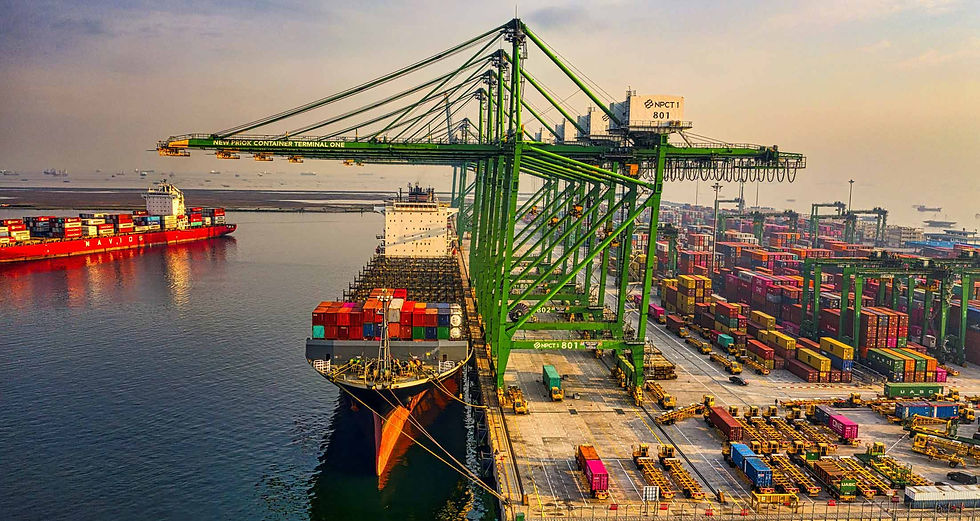Marine Industry Gas Monitoring
- Alex Graft
- Jan 17, 2023
- 3 min read

The marine industry is a diverse and complex sector that encompasses a wide range of activities, including shipping, offshore oil and gas exploration and production, and marine transportation. One of the key safety considerations in the marine industry is the risk of gas leaks and explosions, which can be particularly dangerous in the confined spaces found on ships and offshore platforms.
To help prevent accidents and ensure the safety of workers in the marine industry, it is essential to use gas detection equipment to monitor for the presence of dangerous gases. Gas detection can help to prevent asphyxiation, explosion, and fire, and it is an essential component of any safety program in the marine industry.
There are a number of different gases that can pose a risk in the marine industry, including carbon monoxide, hydrogen sulfide, and volatile organic compounds (VOCs). Carbon monoxide is a colorless, odorless gas that is produced by the incomplete burning of fossil fuels, and it can be toxic at high levels. Hydrogen sulfide is a flammable gas that has a strong, rotten egg-like odor, and it can also be toxic at high levels. VOCs are gases that are emitted by certain solids or liquids, and they can be toxic at high levels.

To monitor for these and other gases, the marine industry typically uses gas detection equipment such as gas detectors or sensors. These devices can be used to continuously monitor the air quality in a ship or offshore platform, and they can alert workers to the presence of dangerous levels of gas. Gas detection equipment can be used in a variety of locations on a ship or offshore platform, including in machinery spaces, cargo holds, and accommodation areas.
Commonly used detection instrumentation for gas include:
Fixed gas detection systems: Fixed gas detection systems are designed to continuously monitor the air quality in a specific location, such as in a machinery space or cargo hold. These systems typically consist of a network of sensors that are connected to a central control panel, which can alert workers to the presence of dangerous levels of gas.
Portable gas detection equipment: Portable gas detection equipment is designed to be carried by workers and used to monitor the air quality in a variety of locations. This may include hand-held gas detectors or personal gas monitors that can be worn on the body. Portable gas detection equipment is particularly useful for workers who may need to enter confined spaces or other areas where fixed gas detection systems are not installed.
Wireless gas detection systems: Wireless gas detection systems are designed to allow workers to remotely monitor the air quality in a specific location. These systems typically use wireless sensors that can transmit data to a central control panel or to a hand-held device, such as a smartphone or tablet. Wireless gas detection systems can be particularly useful for workers who need to monitor the air quality in hard-to-reach or hazardous locations.
In addition to using gas detection equipment, the marine industry also has a number of other measures in place to help prevent accidents and ensure the safety of workers. These may include training programs, emergency response plans, and the use of protective equipment such as gas masks or respirators.
Overall, the importance of gas detection in the marine industry cannot be overstated. By using gas detection equipment and following other safety measures, it is possible to significantly reduce the risks associated with gas in the marine industry and protect the health and safety of workers. Whether you work on a ship or offshore platform, it is essential to be aware of the risks associated with gas and to take the necessary precautions to ensure your safety.





Comments